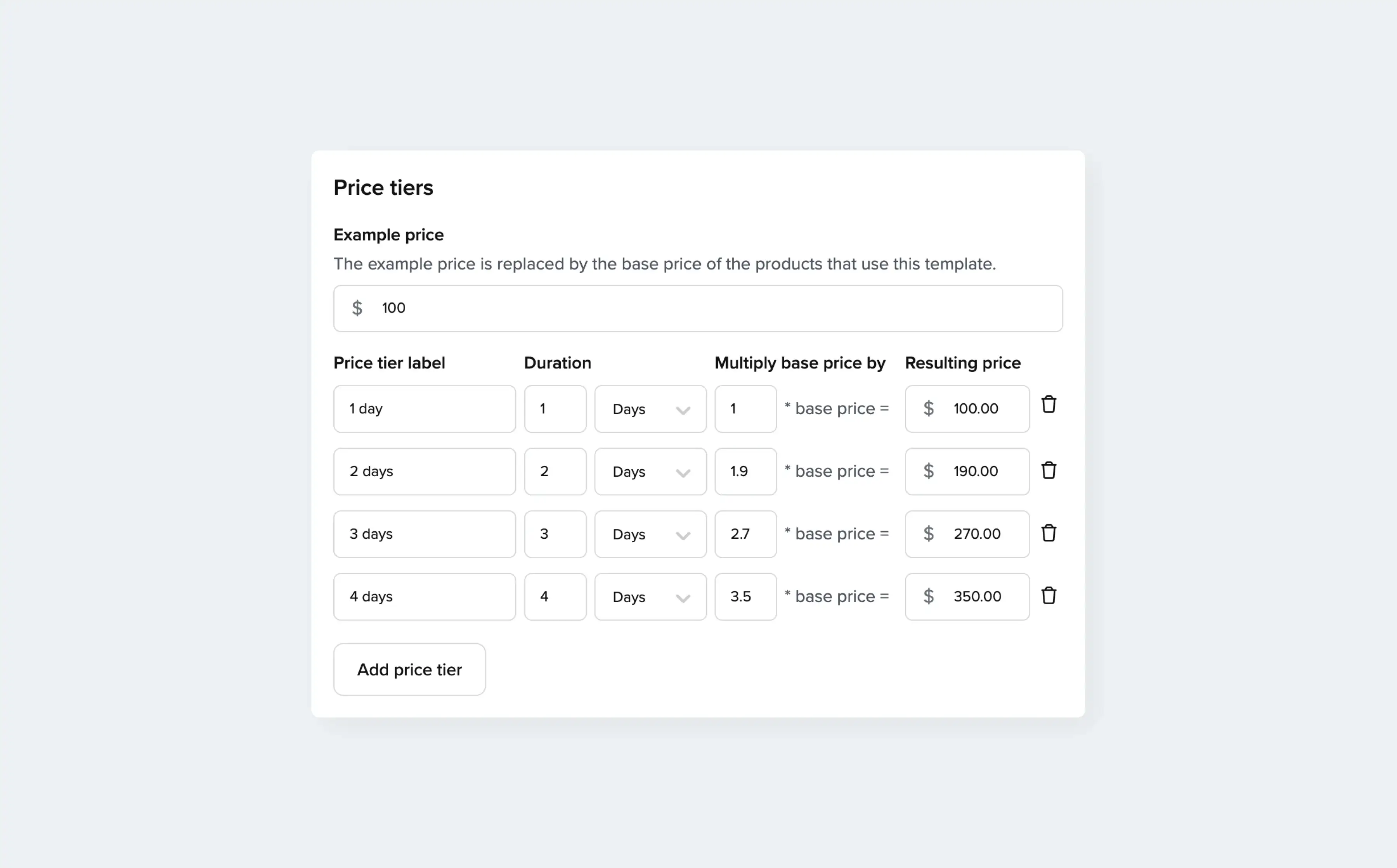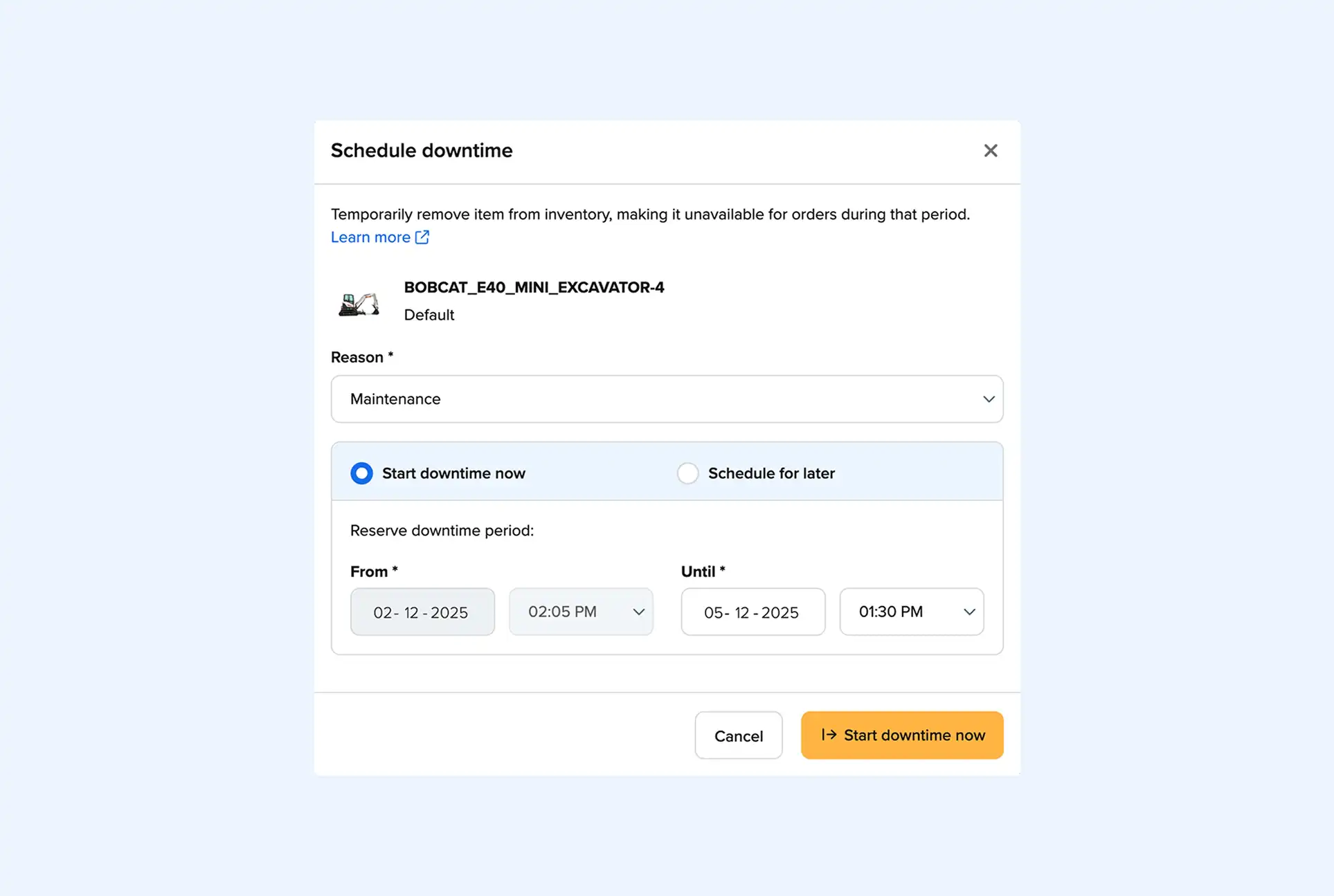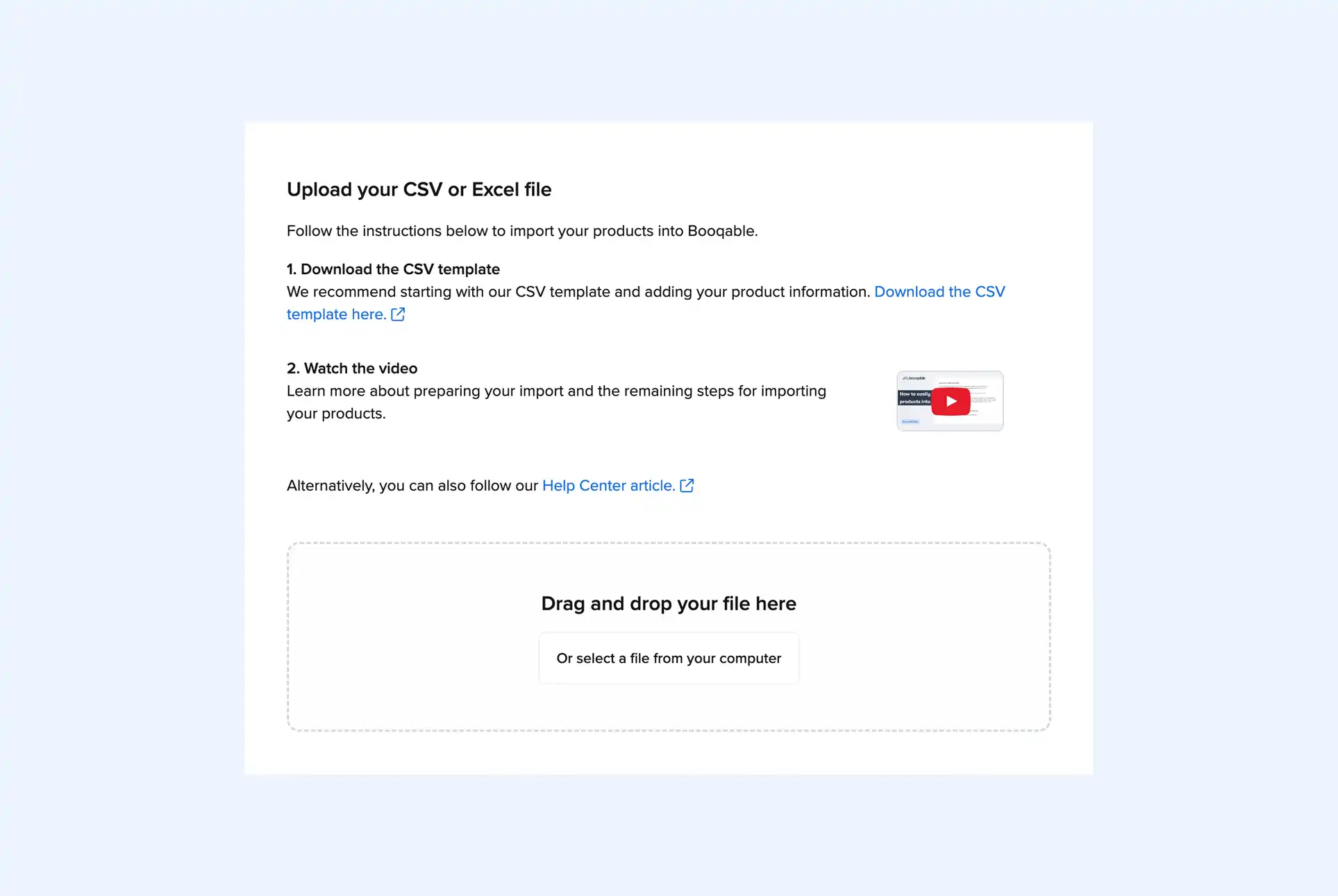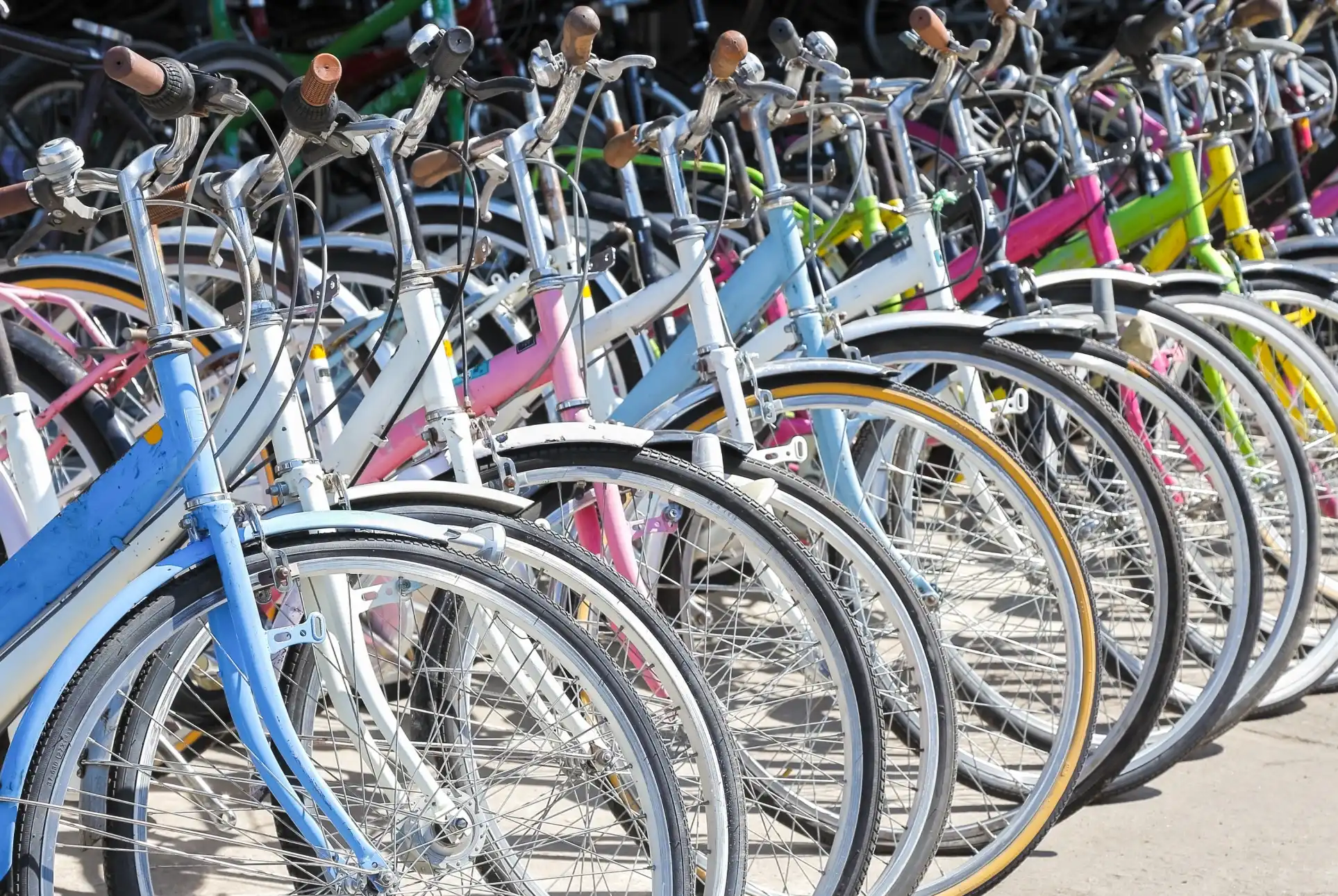Setting equipment rental rates effectively is crucial for running a profitable rental business. Whether you charge daily, weekly, or monthly rates, an automated system can help make complex pricing structures easy to implement. To master equipment rental pricing, you must balance equipment costs, market demand, and operational expenses while staying competitive. Using automated tools such as an equipment rental rate calculator allows you to streamline pricing.
While Excel works well for small operations, investing in dedicated rental software provides numerous advantages. It allows you to automate calculations for equipment rental rates (daily, weekly, or monthly), manage complex pricing structures, and offer discounts—all without manual intervention. This blog post will guide you through essential steps to calculate rental rates, from understanding key pricing factors to automating pricing with rental software.
How to determine the right equipment rental rates
When setting your equipment rental pricing, several factors must be considered to ensure your rates are competitive yet profitable. It would help if you looked not only inwards at your own business but also outwards at your competitor’s approach to pricing. Here are some key factors to consider:
- Equipment cost: This includes the initial purchase price, maintenance, and replacement costs. Understanding your overall equipment rental cost will help guide your pricing.
- Operational expenses: These include storage, transportation, insurance, and staff wages. Factor these costs into your equipment rental expense calculations.
- Market demand: Research what customers will pay in your area. For instance, daily, weekly, and monthly equipment rental rates can fluctuate depending on local demand.
- Competitor pricing: Use tools like an equipment rental rates guide to ensure your pricing aligns with market trends.
- Seasonality: Adjust rates based on peak and off-peak seasons. High demand can allow for premium pricing, while lower demand might require discounts.
- Equipment lifespan and utilization: Factor in the rental equipment ROI to determine how many rentals are needed to recoup your investment and profit from your equipment.
- Utilization rate: Determine how often your equipment is rented out. Higher utilization allows for lower rental rates, while equipment used less frequently may need higher daily rates to cover costs.
Understanding these factors can help you develop a pricing model that covers your equipment rental cost while maximizing profits. This model should be flexible enough to adjust rates based on demand, seasonality, and competitor pricing. Automating this process with rental software can help you manage these factors effectively.
Start your rental business for just 29/month
Put your toes in the water and test the demand in your area with a rental website for just 29/month.
How to calculate equipment rental rates
Once you’ve considered the factors influencing pricing, you can implement various equipment rental rate structures. The most effective way to manage these rates is by using an equipment rental rate calculator, which automates daily, weekly, and monthly pricing calculations.
1. Flat fee pricing
The simplest pricing method is to charge a flat fee, ideal for short-term rentals or when equipment is in high demand. A flat fee structure involves charging the same amount per additional duration, no matter how long an item is booked. An example would be charging $50 a day for a bike rental. If someone books it for five days, they would pay $250.
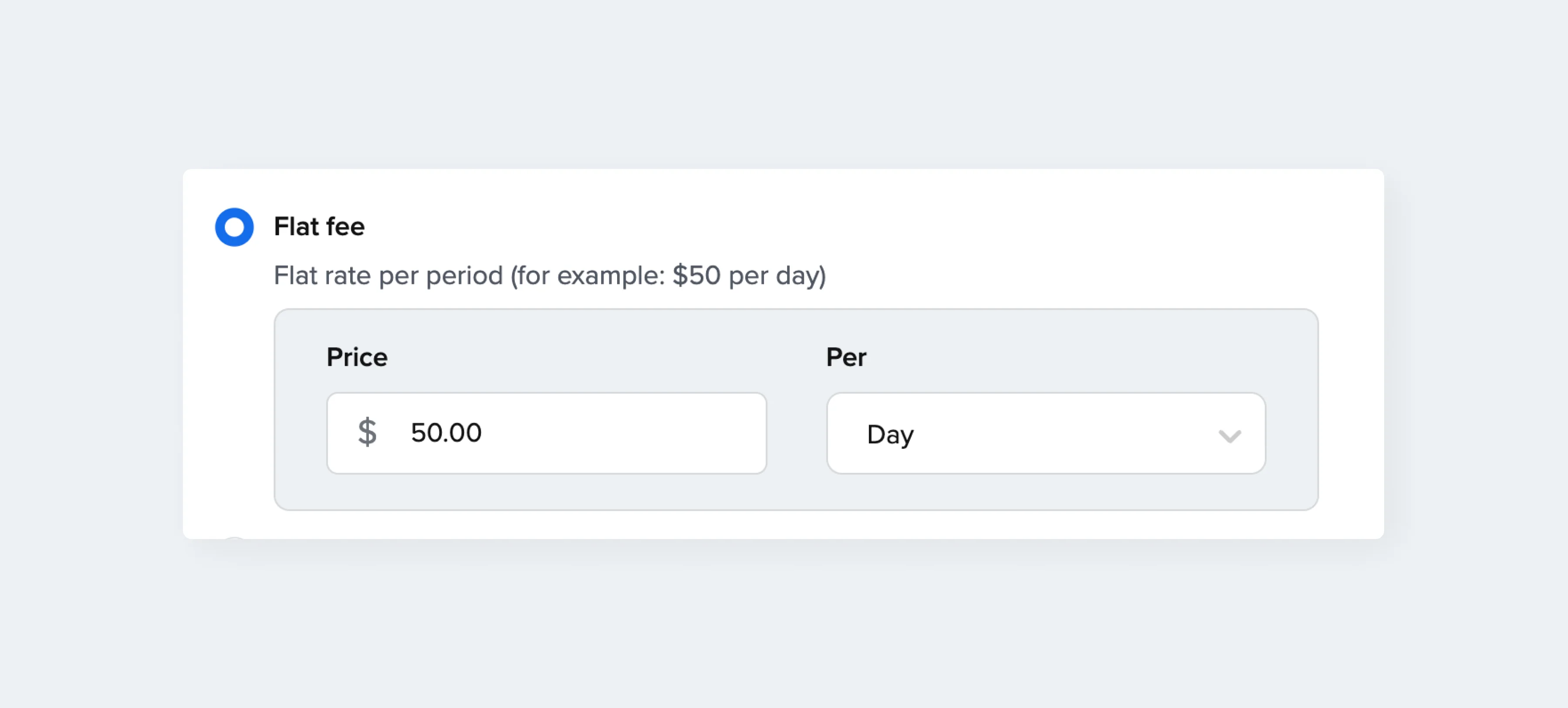
If you set a flat fee in rental software, it will automatically calculate the amount to charge your customers. This prevents you from having to do the math yourself and ensures customers are always charged the right amount.
2. Fixed-rate pricing
Fixed-rate pricing in equipment rentals primarily provides simplicity and predictability for the rental company and the customer. It allows customers to budget effectively, as they know the total cost upfront without worrying about fluctuating charges based on the length of the rental period. Typically, this will be used when a product is only rented out for a fixed period.
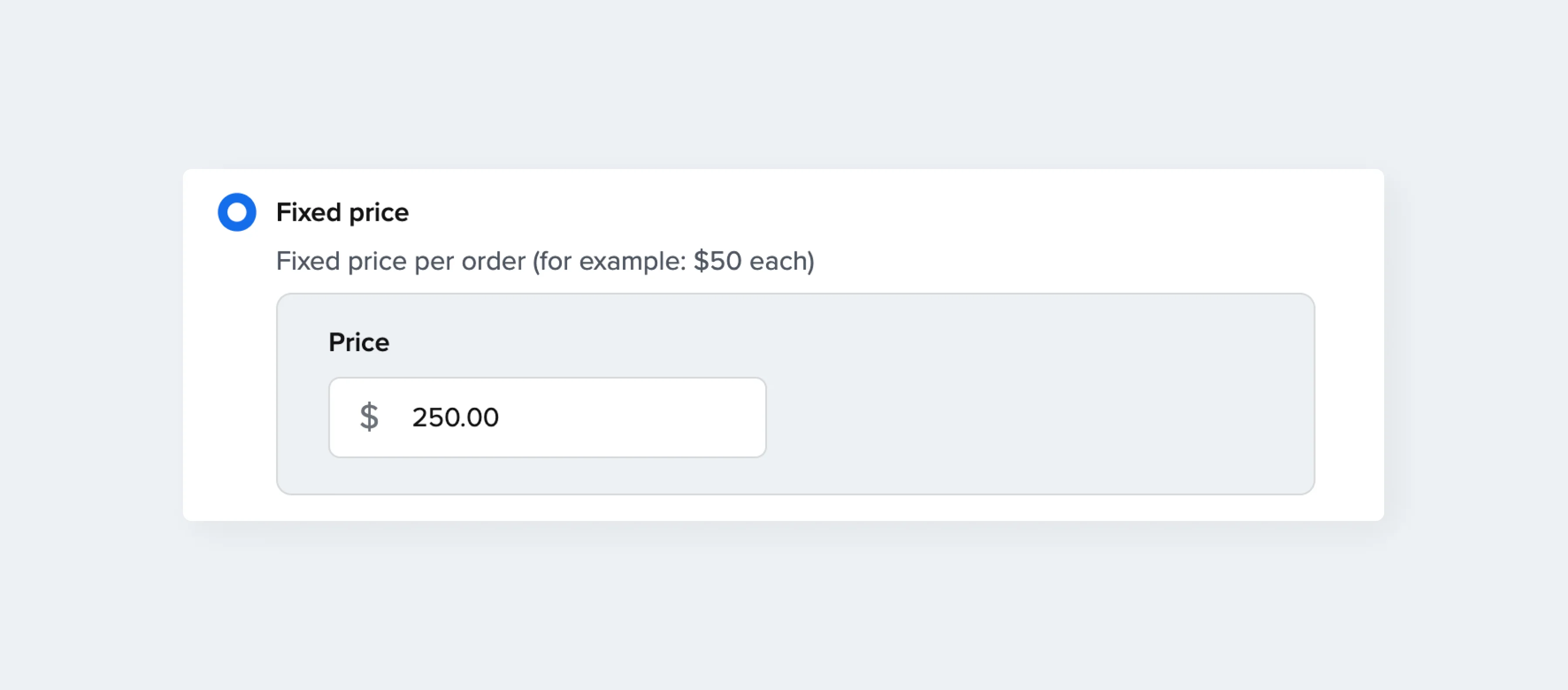
Additionally, fixed-rate pricing can be highly beneficial for offering sales of consumable products or additional services. By providing a clear, all-inclusive rate for these items, businesses can simplify the purchasing decision for customers, leading to increased sales. This model works particularly well for consumables like batteries, cleaning supplies, or protective gear, as well as additional services such as delivery, setup, or maintenance. Customers appreciate the transparency and predictability of fixed-rate pricing, which can enhance their overall satisfaction and loyalty.
3. Tiered pricing for daily, weekly, and monthly rates
A tiered pricing structure works well for businesses that need more flexibility. This involves setting a base rate and then offering reduced rates for extended rental periods (daily, weekly, or monthly). It’s one of the most popular methods for calculating equipment rental rates daily, weekly, or monthly.
If a customer rents a camera for 10 days, your equipment rental calculator will apply the best pricing model:
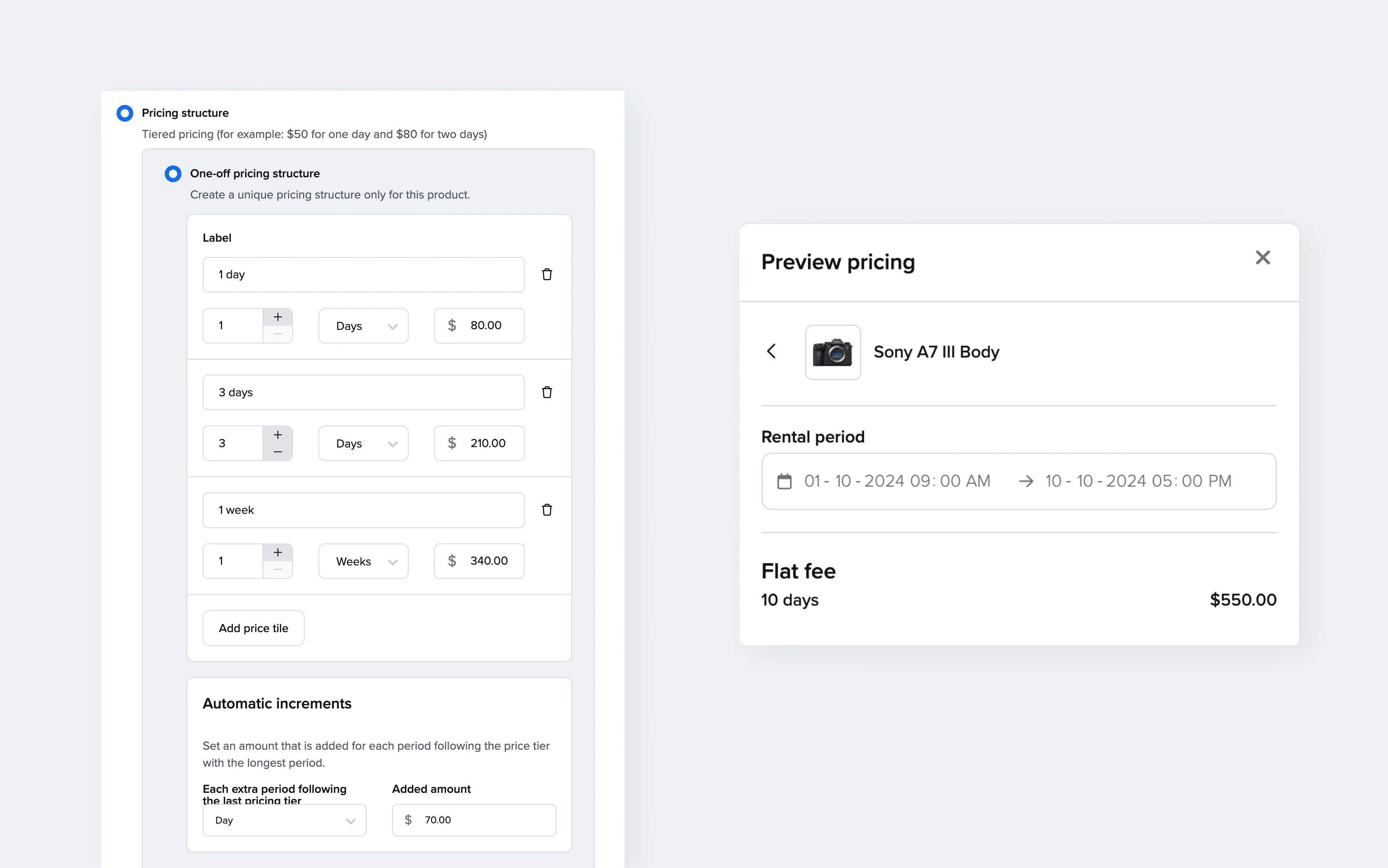
The system calculates the total automatically, offering the most cost-effective rate for the customer at $550 for 10 days. This is $340 for the first week and $70 for each additional day. How can you calculate rental rates for equipment using this model? Tools like Booqable have a built-in equipment rental calculator that automates the process. You input the rental period, and the calculator will compute the final price based on your structure.
Start with building your rental website
Every new rental business starts with a website to get their first bookings.
Practical implementation of equipment rental pricing
While calculating equipment rental rates is theoretically straightforward, implementing these calculations can become complex—especially when managing a large inventory. That’s why rental businesses use specialized software for equipment rental rate calculators and pricing automation.
Using rental software for pricing automation
Platforms like Booqable can handle everything from daily, weekly, or monthly equipment rental rates to bulk discounts and seasonal pricing adjustments. These systems make automating pricing based on rental periods accessible, offering a seamless experience for business owners and customers. All the examples in this blog post can be easily implemented using Booqable’s equipment rental rate settings.
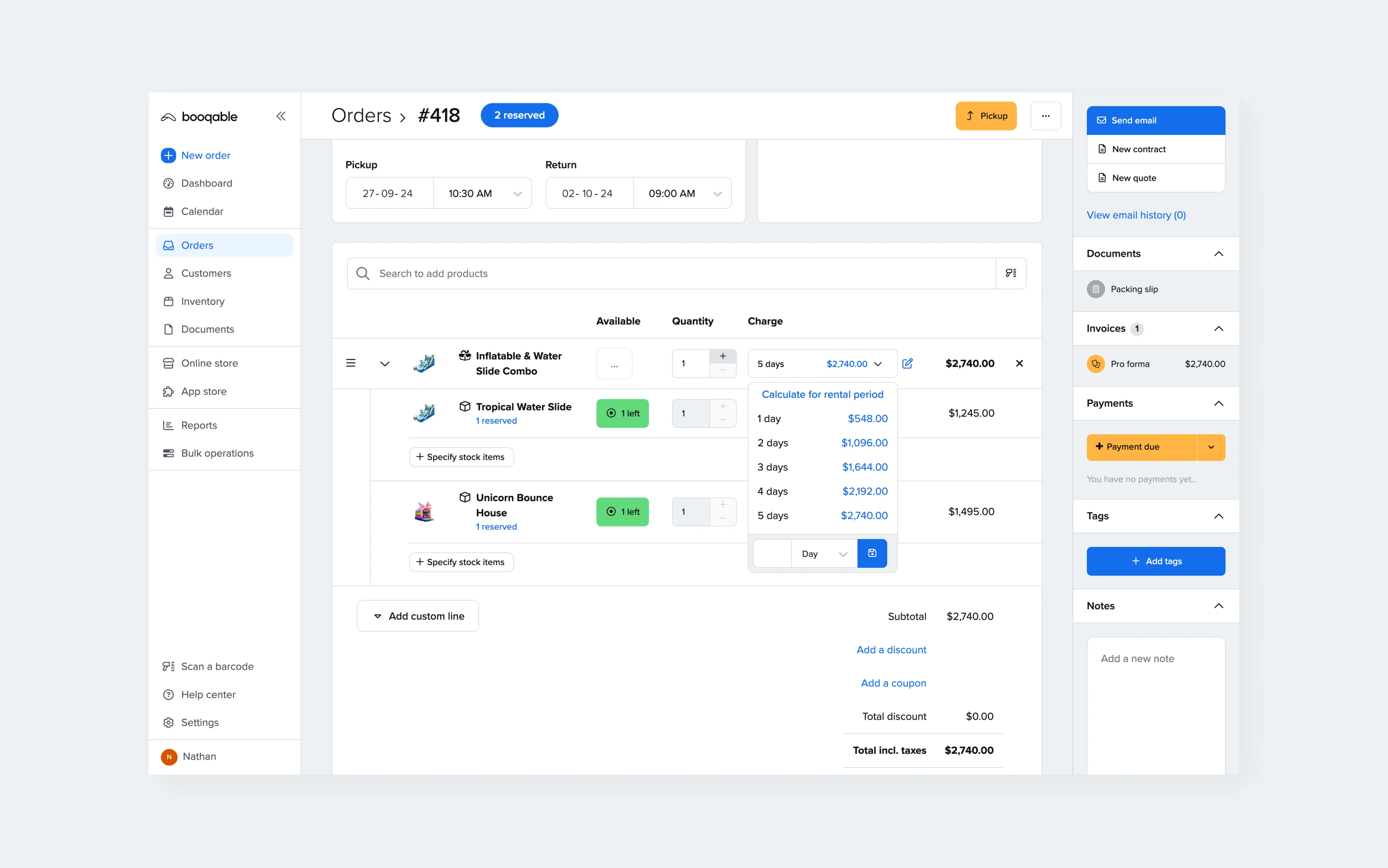
Here are some key benefits of using rental software for equipment rental pricing:
- Automatic calculations: A built-in equipment rental rate calculator automatically allows you to adjust prices for different durations and equipment types.
- Create pricing templates: Use templates to set rates for similar equipment, ensuring consistency across your inventory.
- Seasonal adjustments: Quickly adjust equipment rental rates based on demand fluctuations.
- Discounts and customer loyalty: Offer discounts to loyal customers using coupon codes or manual discounts.
Imagine having 200 pieces of equipment, each with unique daily, weekly, and monthly rates that vary seasonally. An automated tool can dynamically adjust these rates based on preset templates, while Excel would require extensive manual updates for each change, often resulting in costly mistakes.
Limitations of using Excel for equipment rental rate calculations
Using Excel to manage equipment rental rates is a practical solution for small-scale operations or when dealing with straightforward, flat-rate pricing. However, as your rental business grows, you’ll quickly find that Excel has significant limitations. Managing equipment rental rates daily, weekly, and monthly becomes cumbersome, and maintaining accuracy across a large inventory becomes a daunting challenge.
1. Flat pricing models only work for limited inventories
Excel can efficiently handle flat pricing for a small number of items. For instance, if you rent out ten bicycles, each at a flat fee of $30 per day, a simple spreadsheet can help track availability and calculate total rental fees. However, even in these cases, manual entry of dates, rental periods, and calculations is prone to human error.
2. Complex pricing structures are challenging to implement
Excel’s limitations become evident when you introduce complex pricing structures, such as tiered pricing for different durations or multi-rate systems for daily, weekly, and monthly rental periods. You might need to implement formulas to handle base rates plus additional charges depending on how long the equipment is rented.
3.Scalability issues as inventory grows
Excel struggles with scalability. A spreadsheet might suffice if your business deals with just a handful of rental items. However, managing daily, weekly, or monthly equipment rental rates for hundreds of items becomes impossible without losing efficiency and accuracy.
Start automating your equipment rental pricing
Automate your equipment rental pricing with Booqable and streamline your operations.
